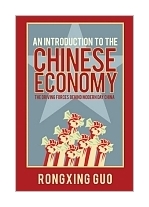|
||
podział tematyczny • wydawnictwa anglojęzyczne podział tematyczny Newsletter: • Zamów informacje o nowościach z wybranego tematu Informacje: • sposoby płatności i dostawy • kontakt • Cookies na stronie • Regulamin zakupów Szukasz książki? Pomożemy Ci! Zadzwoń 512 994 090 Napisz poczta@ksiazki24h.pl |
AN INTRODUCTION TO THE CHINESE ECONOMY: THE DRIVING FORCES BEHINDRONGXING GUO / MODERN DAY CHINAwydawnictwo: WILEY , rok wydania 2010, wydanie Icena netto: net price +5% vat. This comprehensive overview of the modern Chinese economy by a noted expert from China offers a quality and breadth of coverage. In this book, the author provides an introduction to China's economy since 1949 and original insights based on his own extensive research. The book sets out to analyze and compare the operational mechanisms of the Chinese economy between the pre- and post-reform periods and through national, regional and local dimensions. Both positive and negative consequences of the Chinese economic transformation have been clarified. A multiregional comparison of the Chinese economy is conducted in terms of natural and human resources, institutional evolution, as well as economic and social performances. At last, some key issues relating to the inherent operational mechanisms of and the dynamic patterns of the Chinese economy are also discussed. Table of Contents
List of figures. List of tables. List of abbreviations. Acknowledgments. Notes from the author. Chapter 1: A brief history of China. The origins of the nation. Rise and fall of the empire. China in the new millennium. Chapter 2: Spatial and administrative divisions. Administrative divisions. Great regions. Geographical belts. Southern and northern parts. Ethno-cultural areas. Chapter 3: The foundation of the Chinese economy (I). Land and water. Minerals and energy resources. Environmental quality. Policy implications. Chapter 4: The foundation of the Chinese economy (II). Population. Labor and education. Technological innovation. Cultural influence. Chapter 5: Political and economic systems. Party versus state. State and market. Market-oriented reform. Enterprise management. Finance and banking. Future perspective. Chapter 6: Economic growth and social justice. Economic growth. Regional economic differences. How (un)equal is the Chinese society? Poverty and social security. Chapter 7: International economic engagement. Historical background. China opens its door. Foreign direct investment. Foreign trade. Chapter 8: Studying Chinese economics: Key issues. Why China has a collectivistic culture. Why China adopted a gradual economic reform. Why the Chinese economy cannot be spatially optimized. Why China’s long-term growth isn’t sustainable. Appendixes. A historical chronology. China’s cultural similarity with your country. Bibliography. Index. 256 pages, Hardcover
Po otrzymaniu zamówienia poinformujemy, |


